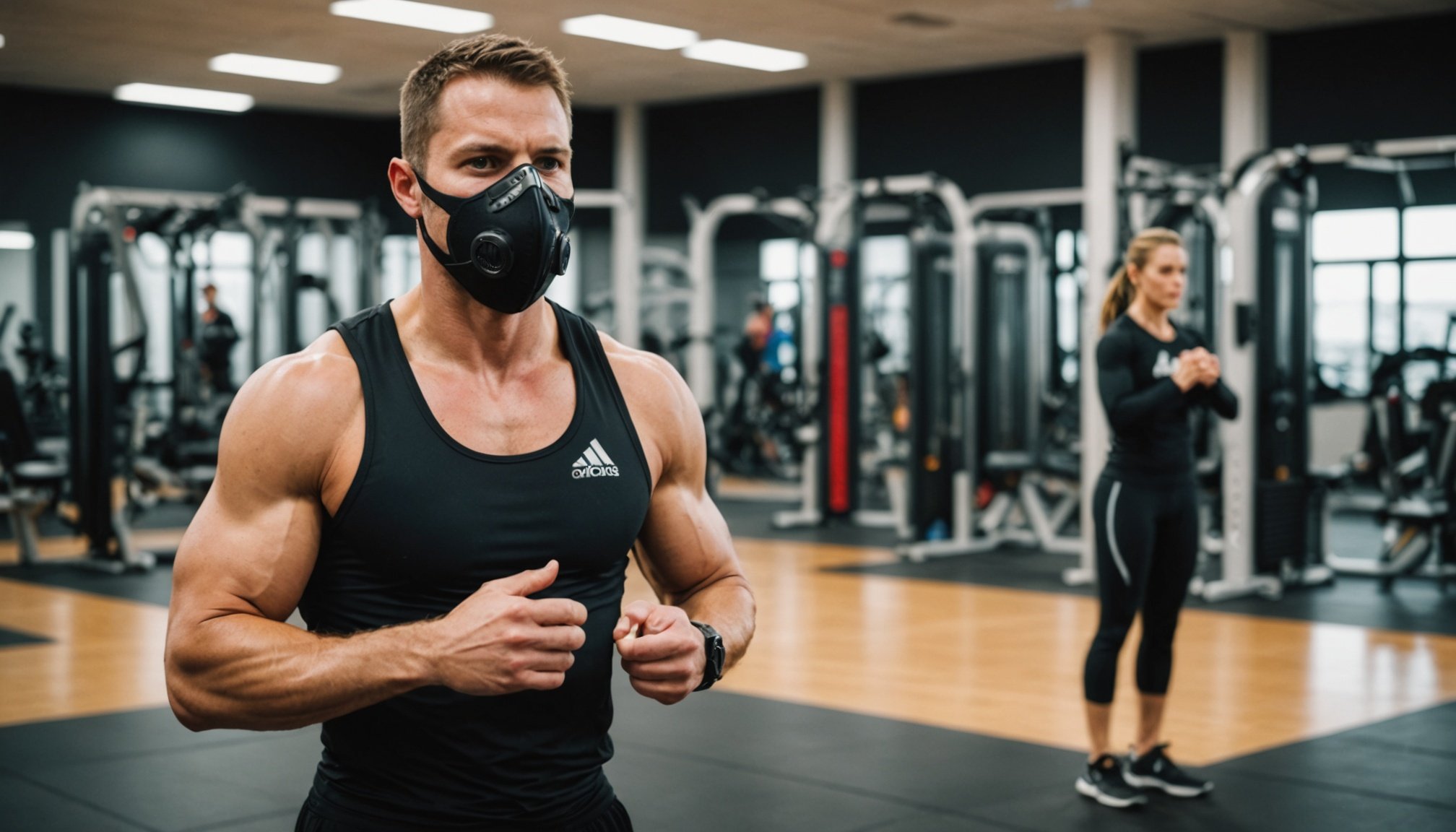In recent years, there’s been a noticeable trend within the fitness community concerning the usage of altitude masks. Originally designed to mimic the low-oxygen conditions at high altitudes, these masks are said to improve cardiorespiratory fitness and muscle endurance. But what scientific evidence supports these claims? Let’s delve into this subject together.
The Science Behind Altitude Masks
Before we explore the effects of altitude masks, it’s vital to understand the rationale behind their use. Essentially, these masks restrict your air intake to simulate high-altitude conditions, your body responds to these conditions through various physiological adaptations aimed at improving oxygen utilization.
Have you seen this : How do different recovery drinks compare in their effect on muscle synthesis?
Altitude masks are based on the concept of hypoxic training, which involves performing physical activity in a low-oxygen environment. This is usually achieved by training at high altitudes. However, altitude masks attempt to replicate these conditions at any location, a practical solution for those who live at sea level or those who cannot afford frequent trips to high altitudes for training purposes.
There are two primary adaptation processes that occur during hypoxic training. First, your body increases its production of red blood cells, which are responsible for transporting oxygen throughout the body. This adaptation improves your body’s oxygen-carrying capacity, ultimately enhancing your endurance performance. Second, there is a boost in mitochondrial efficiency, the part of the cell that produces energy. This improvement allows your muscles to generate more energy, thereby increasing your muscle endurance.
Also read : What are the specific benefits of high-frequency training for muscle hypertrophy?
The Effects on Cardiorespiratory Fitness
Now, let’s delve into the effects of altitude masks on cardiorespiratory fitness. This term refers to the efficiency of your cardiovascular system (heart and blood vessels) and respiratory system (lungs) in supplying oxygen to your muscles during prolonged exercise.
Several studies have investigated the effects of altitude masks on cardiorespiratory fitness, with mixed results. Some have found that training with altitude masks can lead to improvements in VO2 max, which is a measure of maximal oxygen uptake and a key indicator of cardiorespiratory fitness. However, these benefits were not significantly greater than those seen in individuals who trained without a mask.
Further, some studies have reported no significant improvements in cardiorespiratory fitness with altitude mask training. These findings suggest that while altitude masks may elicit some physiological responses similar to actual altitude training, they might not be enough to significantly enhance cardiorespiratory fitness.
Impact on Muscle Endurance
The impact of altitude masks on muscle endurance, or the ability of a muscle to withstand fatigue over time, has also been a topic of interest among researchers and fitness enthusiasts.
Just as with cardiorespiratory fitness, the research on the effect of altitude masks on muscle endurance is not conclusive. Some studies report that training with altitude masks can improve muscle endurance, while others found no significant effect.
The supposed improvement in muscle endurance may be related to the increase in mitochondrial efficiency brought about by hypoxic training. As mentioned earlier, the more efficient your mitochondria, the more energy your muscles can generate, which theoretically could lead to better muscle endurance. However, the extent to which altitude masks can stimulate this adaptation is unclear.
Altitude Masks vs. High-Altitude Training
While altitude masks aim to mimic the benefits of high-altitude training, there are significant differences between the two that may affect their efficacy.
High-altitude training involves living and training at altitudes of around 2,000 to 3,000 meters, where the oxygen content is significantly lower than at sea level. This scenario can’t be accurately replicated with an altitude mask, which merely reduces the amount of air you can inhale, but doesn’t alter the oxygen content of that air.
Additionally, the physiological adaptations to real high-altitude training occur over a period of weeks or even months, not during a single workout session. Altitude masks are typically worn for the duration of a workout, which usually lasts no more than a couple of hours. This short exposure may not be sufficient to trigger the desired adaptations.
Concluding Remarks
While altitude masks have been marketed as a tool to improve cardiorespiratory fitness and muscle endurance, the scientific evidence supporting these claims is mixed at best. The physiological responses to altitude mask training seem to be less extensive and less consistent than those resulting from actual high-altitude training.
As a fitness enthusiast, it is crucial to understand that there is no shortcut to improving fitness and performance. Altitude masks might add an element of challenge to your workouts, but they should not replace solid training principles, proper nutrition, and adequate rest. Ultimately, it’s the consistency and quality of your training that will yield the best results, not necessarily the devices you use during your workouts.
Practical Applications of Altitude Masks
The theoretical benefits of altitude masks, such as improved cardiorespiratory fitness and muscle endurance, have sparked a lot of interest among athletes and fitness enthusiasts. Consequently, these masks have found various applications in training regimens and workout routines.
In the world of sports, athletes often incorporate altitude masks into their training to gain an edge over their competitors. The masks are used during interval training, strength training, and endurance exercises to push their bodies to the limit and potentially stimulate beneficial adaptations. Some athletes also use these masks as a preparatory tool when they are about to compete in areas with high altitudes.
In addition to athletes, altitude masks are popular among military personnel, firefighters, and other professionals whose jobs require high levels of physical fitness. These professionals use the masks to simulate the demanding conditions they may face in their line of work, such as oxygen-poor environments or physically taxing situations.
However, it’s important to note that the use of altitude masks is not for everyone. People with respiratory conditions, cardiovascular problems, or other health issues should avoid using these masks without medical supervision, as it could potentially exacerbate their conditions.
Response of the Fitness Community
Given the controversial nature of altitude masks and the mixed results from the scientific community, the response from the fitness community has been varied. Some swear by the benefits of the masks, reporting improvements in their endurance, strength, and overall performance. Others, however, have dismissed the masks as an ineffective gimmick, citing the lack of substantial scientific evidence in support of their efficacy.
It’s also worth noting that many fitness professionals emphasize the importance of proper technique and comprehensive training programs over the use of devices like altitude masks. They argue that while the masks may provide a slight edge or increase the difficulty of a workout, they are not a substitute for a well-rounded, consistent exercise regimen.
These perspectives highlight a broader tendency in the fitness community — the penchant for seeking quick fixes and shortcuts to fitness improvement. While new technologies and tools can certainly play a role in enhancing athletic performance, they should not detract from the fundamental principles of effective training, including proper nutrition, sufficient rest, and tailored exercise programs.
Concluding Thoughts
In conclusion, altitude masks are a contentious tool in the fitness sector. Their proposed benefits, including improved cardiorespiratory fitness and muscle endurance, are intriguing, yet the scientific evidence supporting these claims remains inconsistent.
As is often the case with fitness trends, it’s essential to approach altitude masks with a balanced perspective. While they may have a place in some training regimens, they should not be viewed as a magic bullet for fitness advancement. Instead, individuals should focus on the proven pillars of fitness: consistent, varied exercise, adequate rest, and a balanced diet.
In the end, improving one’s fitness is a journey that requires dedication, patience, and time. Despite the allure of shortcuts and quick fixes, there is simply no substitute for hard work and perseverance.






